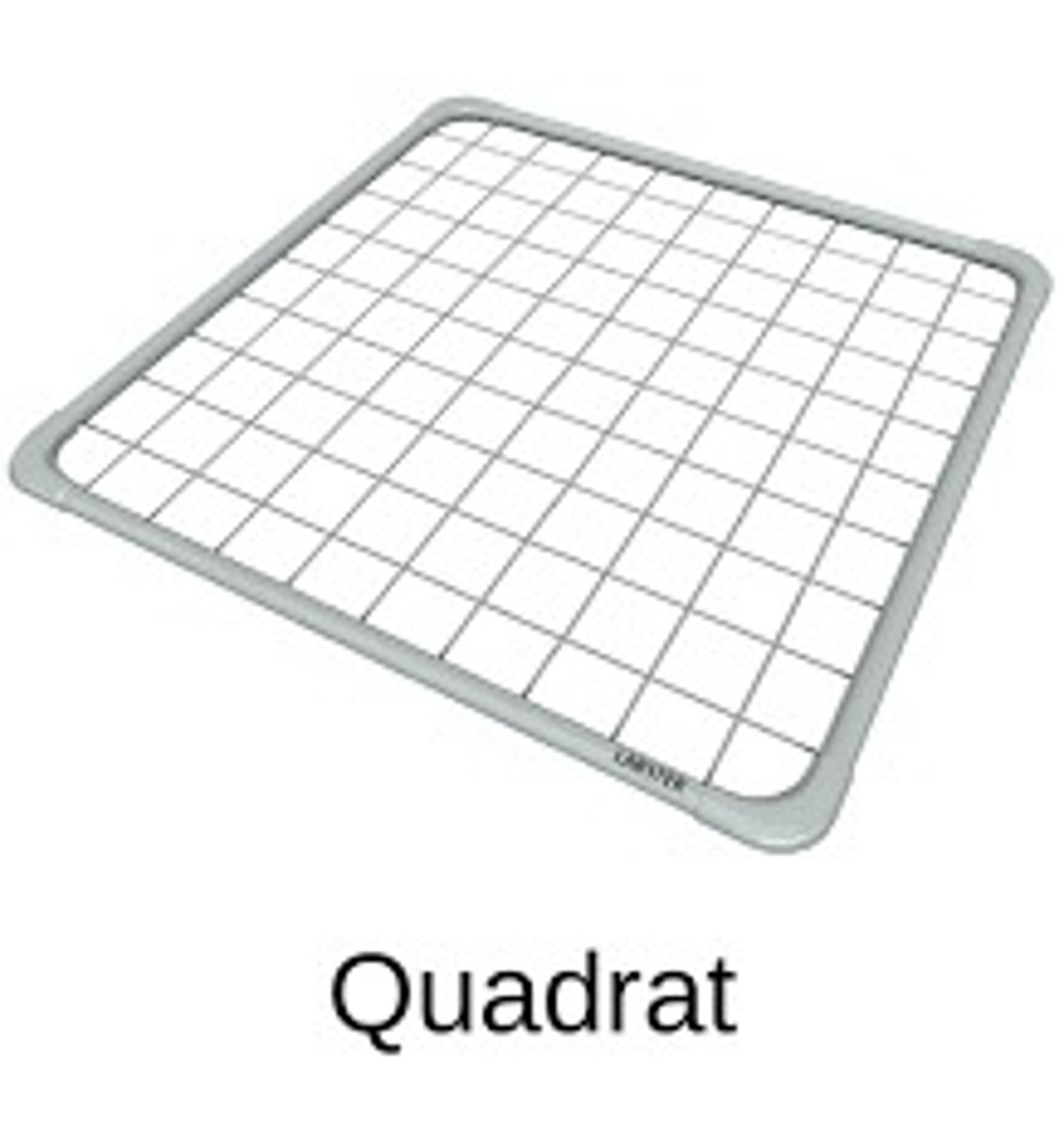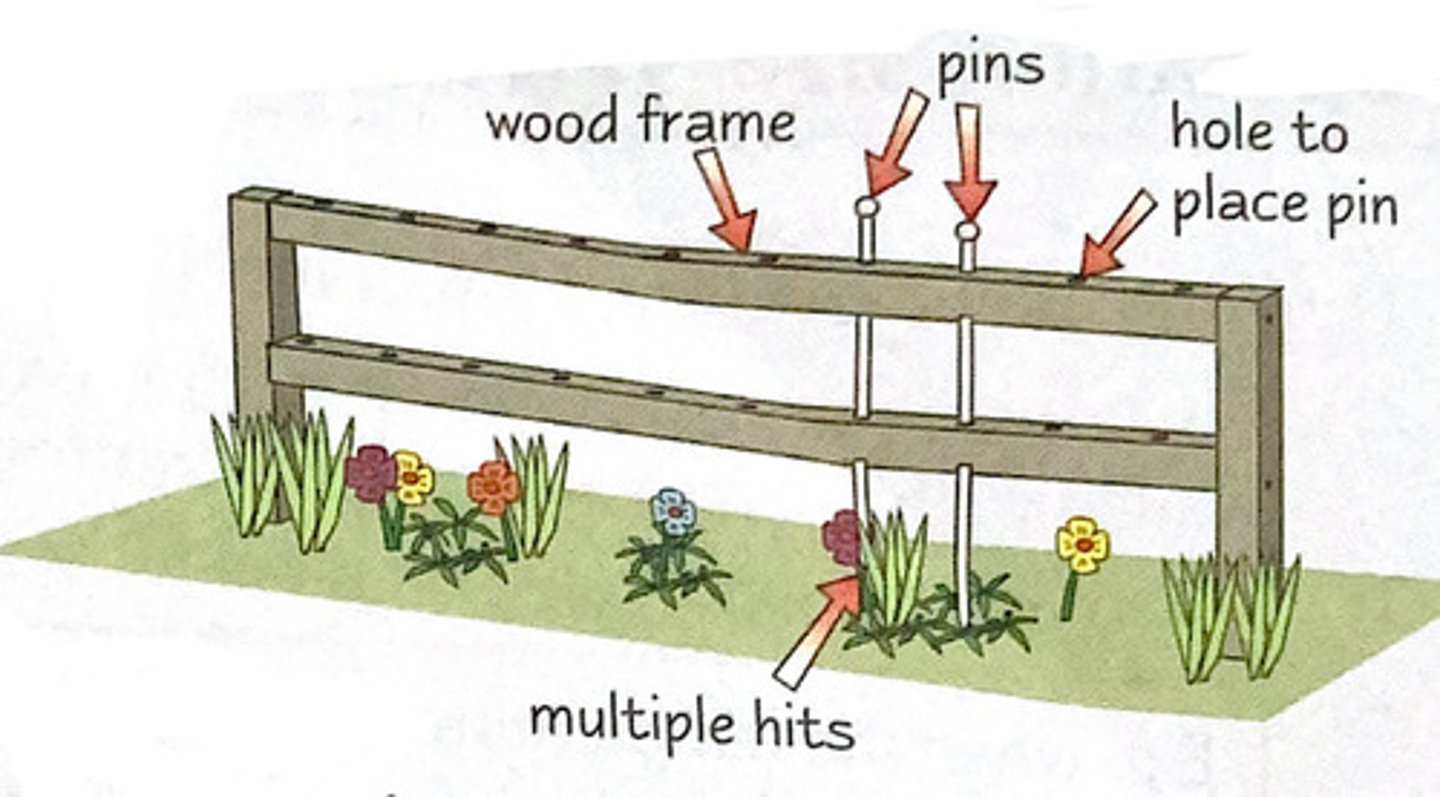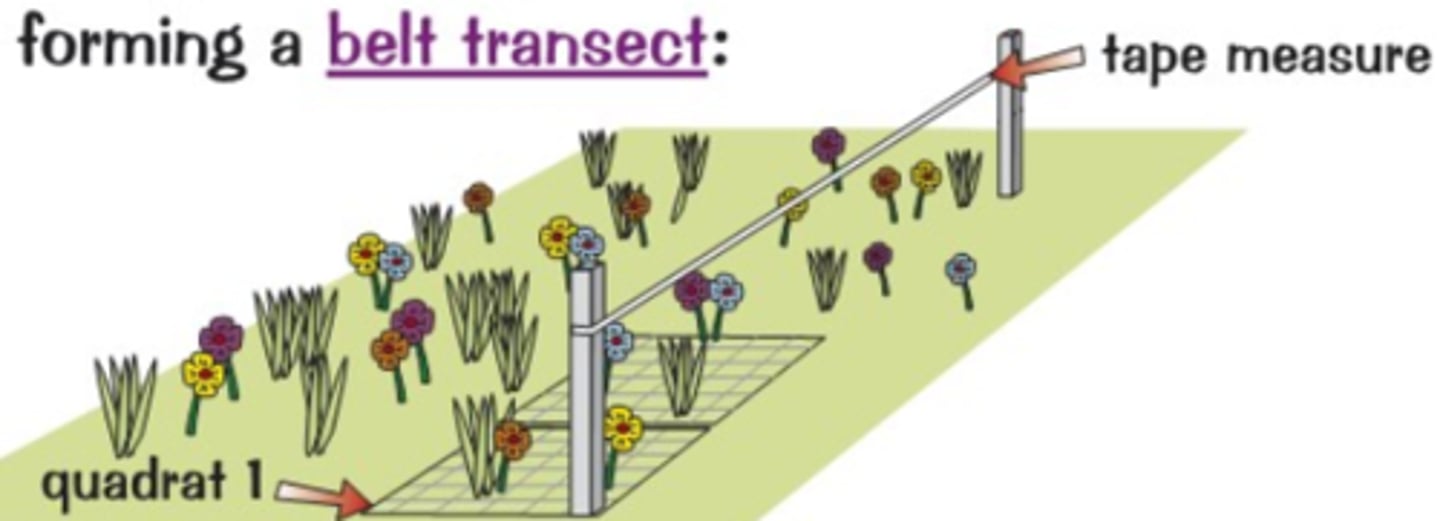Sampling
1/22
There's no tags or description
Looks like no tags are added yet.
Name | Mastery | Learn | Test | Matching | Spaced |
|---|
No study sessions yet.
23 Terms
Why do we sample?
It is often impossible or counterproductive to collect data from all members of population. Therefore we select a small portion to represent the whole area, and it must be a random sample.
Why is random sampling important?
To avoid bias
How do you generate random results?
- Take samples at regular distances in your habitat, like every 5m.
- Generate random numbers from a computer to plot coordinates
- Select coordinates on a map randomly
How many samples do you take?
- The samples must be representative of the area. 100m² area would have 10 samples taken (10% of each area you're sampling)
- Repeat many times. Calculate a mean
- Avoid recounting the same plant
- Sample at different times of the year/month/day/weather conditions
Sampling plants
- Quadrats

Grid quadrats
Used to calculate the percentage cover or the number of individuals of each species (quantitative)

Point quadrats
Only count the organism that its pins are touching as it is hitting the floor

Instead of the quantitative percentage cover, what's the qualitative version?
DACFOR scale
Dominant
Abundant
Common
Frequent
Occasional
Rare
What are transects?
A line along which samples can be taken
Belt
Line
Why are transects good?
Useful for cliffs, rocky shores, and other habitats, like up a gradient
Belt transects
- Lay out a measuring tape in a straight line across the sample area
- Use a grid quadrat e.g. every 5m, and count the number of organisms of each species
- Use an identification key
- Use a method to avoid recounting
- Calculate a mean
- Repeat at different times of the year
- Record the abundance or percentage cover of each species within each quadrat

Line transects
- Lay out a measuring tape in a straight line across the sample area
- At regular distances along the tape (like every 5m) record the identity of the organisms that touch the line

Why are line transects worse than belt transects?
- Not as detailed
- Not an accurate representation of the total population
When would you use a line transect?
If a quick survey of a range of species is required
Measuring fields
- Use 2 tape measures to make a grid
- Generate random coordinates
- Use a quadrat at those coordinates to count the number of individuals of each species
- Use an identification key
- Use a method to avoid recounting
- Sample at different times of the year
What is Stratified Sampling?
The population is divided into groups called "strata" based on shared characteristics.
Then, a random sample is taken from each group, and this way, the sample reflects the diversity of the whole population more accurately than simple random sampling would,

Stratified sampling
- Use a belt transect
- Use a quadrat in each strata so it represents the area
- E.g. every 5m, count the number of organisms of each species
- Use a method to avoid recounting
- Calculate a mean
- Repeat at different times of the year
Why are keys important in sampling?
Keys are used to identify both plant and animal species. The students must work out their plant and animal life within the quadrats.
Sampling large animals
- Look at droppings
- Wait to see what turns up (opportunistic sampling)
Sampling smaller animals
- Sweep net
- Collecting from trees
- Pitfall trap
- A tullgren funnel
- A light trap
When sampling animals, what is important?
Must use a standardised, systematic procedure
Proportion of polymorphic gene loci =

The greater the number of polymorphic gene loci...
...the greater the genetic biodiversity